It’s not just about how many people use social media, but how they use it, says Simon Sanders, head of digital at Lansons.
Who is using social media in the UK?
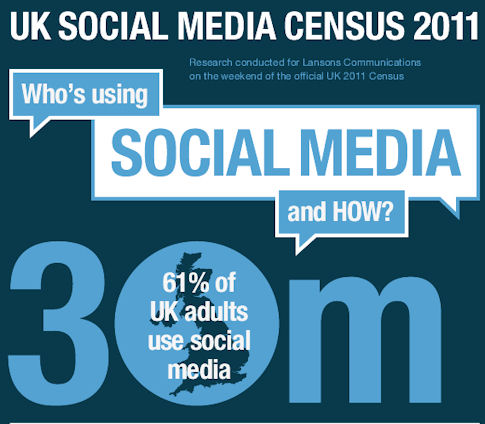
Inspired by the 2011 census, we commissioned new research in order to gather a different snapshot of UK life. The aim of our Social Media Census has been to capture not just how many people are using social media, but how they are using them. In carrying out the census, Opinium Research described lots of different types of online and social media activity and asked people to consider which they took part in. In tallying the results we were able to classify the “9Cs” of social media user types.
The 9Cs of social media types
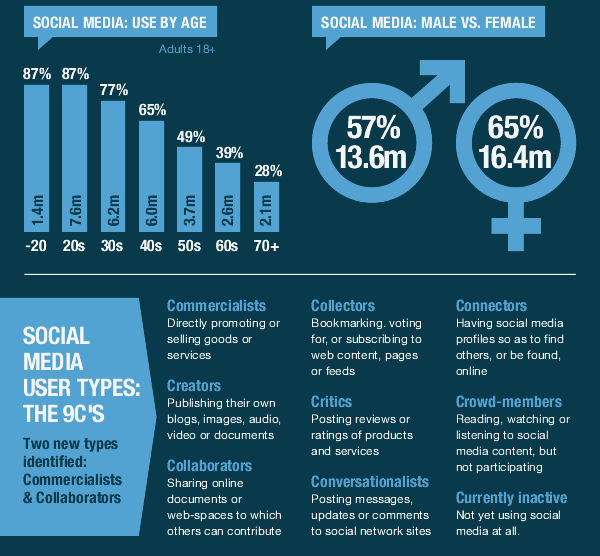
The most obvious observation is simply that with 61 per cent of adults now active in some way, no one charged with brand communications should regard social media as a niche area, and should be looking to integrate social media into their communication strategies. The second is probably that although everyone correctly expects ‘Generation Y’ to be highly social online, we can see that there are more than 8m adults over the age of 50 who are actively using social media. Of course, what people are doing varies considerably – even around the same social content. There is a world of difference between those who might simply read others’ online reviews of hotels or cameras (crowd members) and those who actively write such reviews (critics).
The research was inspired by, and builds upon, original work in the US by Forrester Research which previously outlined seven Social Technographics such as those who are Creators, Critics and Collectors. Our research identified two totally new categories, those of Collaborators and Commercialists. The emergence of new categories serves as a useful reminder that technology and techniques will always evolve and that understanding how people use social media for their own ends will be instructive in how to best engage with them. Over time, users’ behaviour evolves and future waves of research should show the numbers classified as currently inactive diminishing as online users become ever more social.
For now though, going beyond the headline figures, delving further into the data can provide useful insights which are worth considering when planning social strategies. There are interesting differences between male and female usage.
Social media use by gender:
Women:
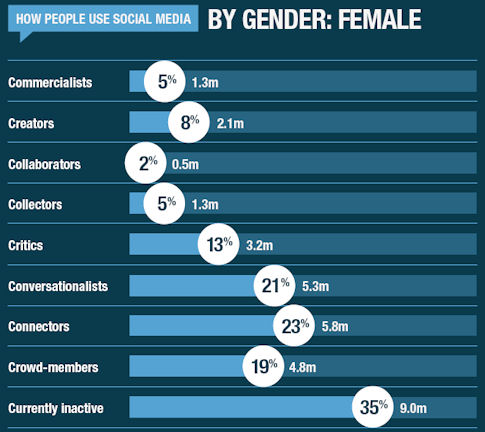
Men:
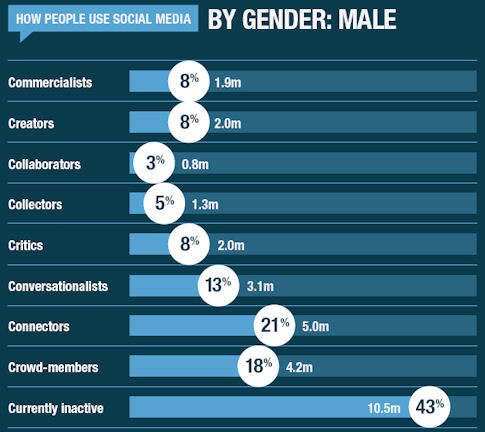
Social Media use by age
The most obvious and significant differences – not just in the absolute numbers, but also percentages – are across user types within the age bands. For example, and as shown below, by the time you get up to the 50s’ age band, only one in 20 are classified as Creators, compared to nearly one in five of those in their 20s. As such, looking to encouraging those in middle-age to film and upload, say, cookery recipes might be less successful a way to engage people than say simply creating content that can be shared or more conversational approaches within forums or social networks.
Social media use in under 20s
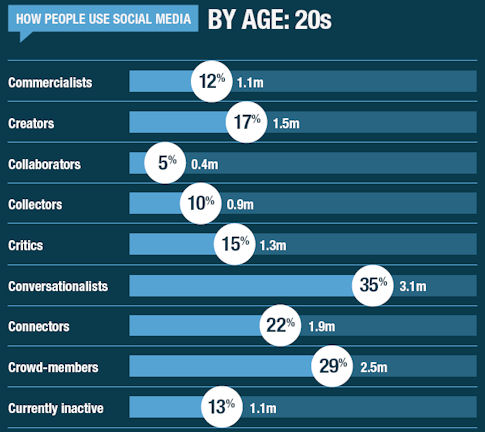
Social media use in the over 50s
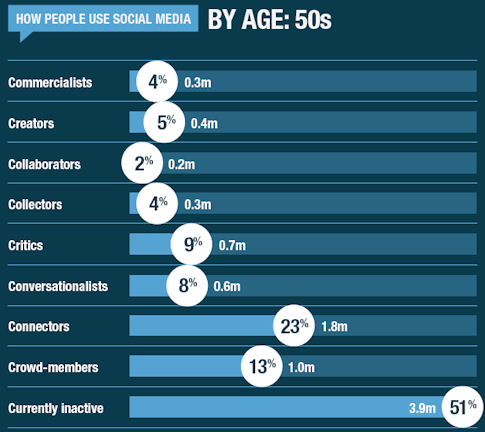
Ultimately, this type of data is only useful as part of the bigger exercise in developing a communications strategy that takes into account social media. Other important steps way before considering user behaviours include understanding what people are saying about your brand, your competitors and your sector, a clear idea the gain you want to make from participating in social media, and some clear objectives. This data then is just part of the jigsaw but should help brands unlock how they might humanise their brands – and find the right ways to engage and be engaging.
Methodology
The UK Social Media Census 2011 took place over the same weekend of the official UK Government 2011 census (27 March 2011). A nationally representative sample of 4,093 UK respondents aged 18-plus years was polled by Opinium Research on behalf of Lansons Communications.
PR Masterclass: The Intersection of PR and GEO
Join PRmoment for a Masterclass featuring 10 of the industry’s foremost experts. You will walk away with a clear, actionable strategy for adapting your content to an AI-first search environment.
Taking place on Wednesday 25th February in London, both virtual and in person tickets are available.
If you enjoyed this article, sign up for free to our twice weekly editorial alert.
We have six email alerts in total - covering ESG, internal comms, PR jobs and events. Enter your email address below to find out more:









